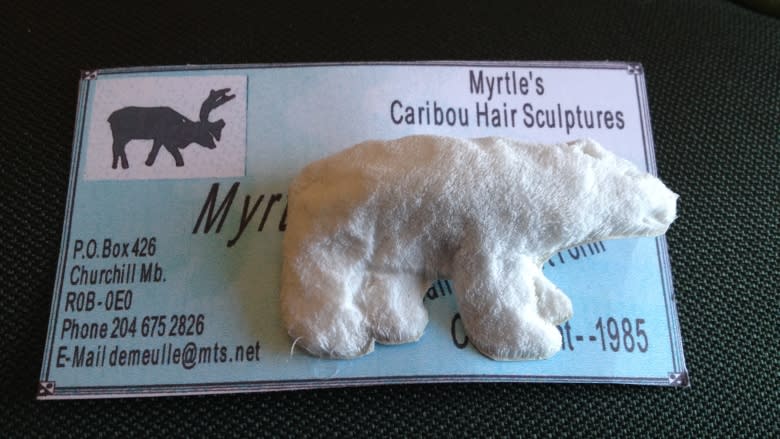A vision led to 30-year career for Churchill artist
One night more than three decades ago, Métis artist Myrtle deMeulles had a dream. In it, she saw a pile of fur scraps come to life. She remembers birds, animals and people "jump" right out of the hair.
DeMeulles knew right away what the dream meant. She says she was being guided to use scraps of old caribou hide, which might otherwise be thrown out, and turn them into art.
The technique she came up was caribou hair sculpting. She developed it out of a similar art form called tufting, a skill she knew and had shared with others in Churchill, Man., for years.
"I taught about 60 other people how to do [tufting] and they are now passing that knowledge down to other people," she said.
"It's a coarse kind of an art form," deMeulles said of tufting, "To look at it, you'd think it was made out of porcupine quills."
According to deMeulles, tufting as an art practice began in northern Alberta because indigenous communities there lacked materials to decorate men's clothing.
"They made flowers and vines … like we do with bead work. But they didn't have access to glass beads so they used moose hair," she said.
Innovating with a traditional art form
It took deMeulles more than a year to develop her own method of tufting. Her technique requires intricately cutting caribou hair with a small set of scissors.
In deMeulles' smaller pieces, one single caribou hair could be cut to represent an eye.
"It's just a piece of hide with a little bit of hair left on it. I draw my design on the [back of the] hide itself, and I actually cut the images into the hair that's left on the hide," deMeulles said.
The different lengths of fur create a three-dimensional effect, along with the natural change in colour present in the hairs themselves.
Most of deMeulles's artwork uses indigenous imagery: scenes of warriors, hoop dancers and local animals. But not all orders are traditional.
She recently filled a request to make a large picture of Elvis Presley and, previously, three Mickey Mouse pictures.
DeMeulles says she has clients from across the country, from Montreal to Victoria, B.C., to neighbours right in Churchill, Manitoba.
"Everybody wants me to make an Elvis for them [now]. I said, 'Are you kidding me?' It took me two and a half months to make that damn thing," she said, laughing.
Keeping indigenous art alive in northern Manitoba
If there is one thing which has kept indigenous arts in Churchill alive all these years, deMeulles says it is the stubbornness of people like herself.
"You know it's coming back," she said, "but not as strong as it was in the old days."
"Now these people that I taught years ago have taught their daughters," she added. "You know, I stress the fact that's it's very important that we keep all these things alive and growing."
Listen to Marcy Markusa's interview with Myrtle deMeulles on CBC's Information Radio on Wednesday, Feb. 25, at 7:20 a.m. on 89.3 FM in Winnipeg or 1230 AM in Churchill.




